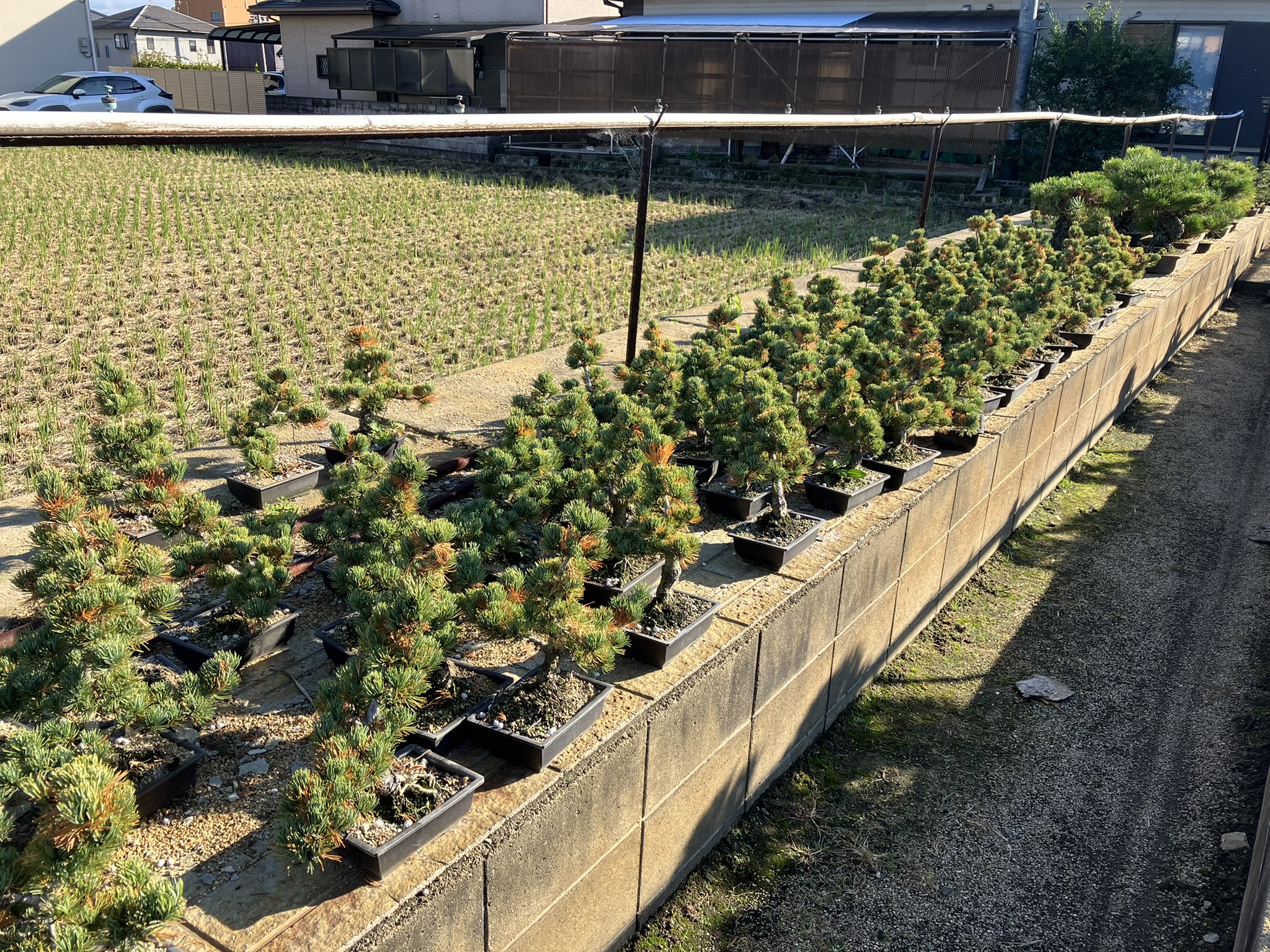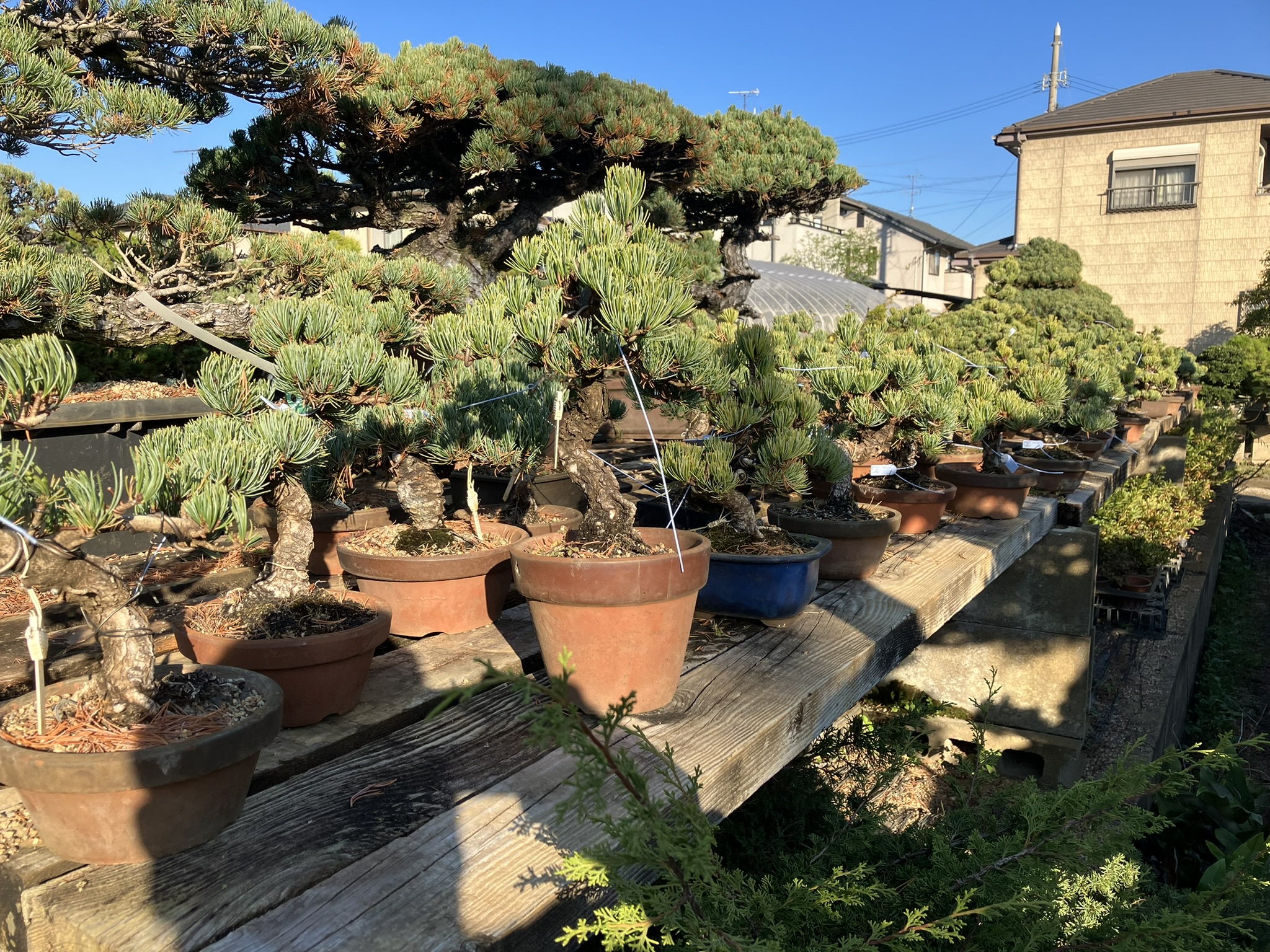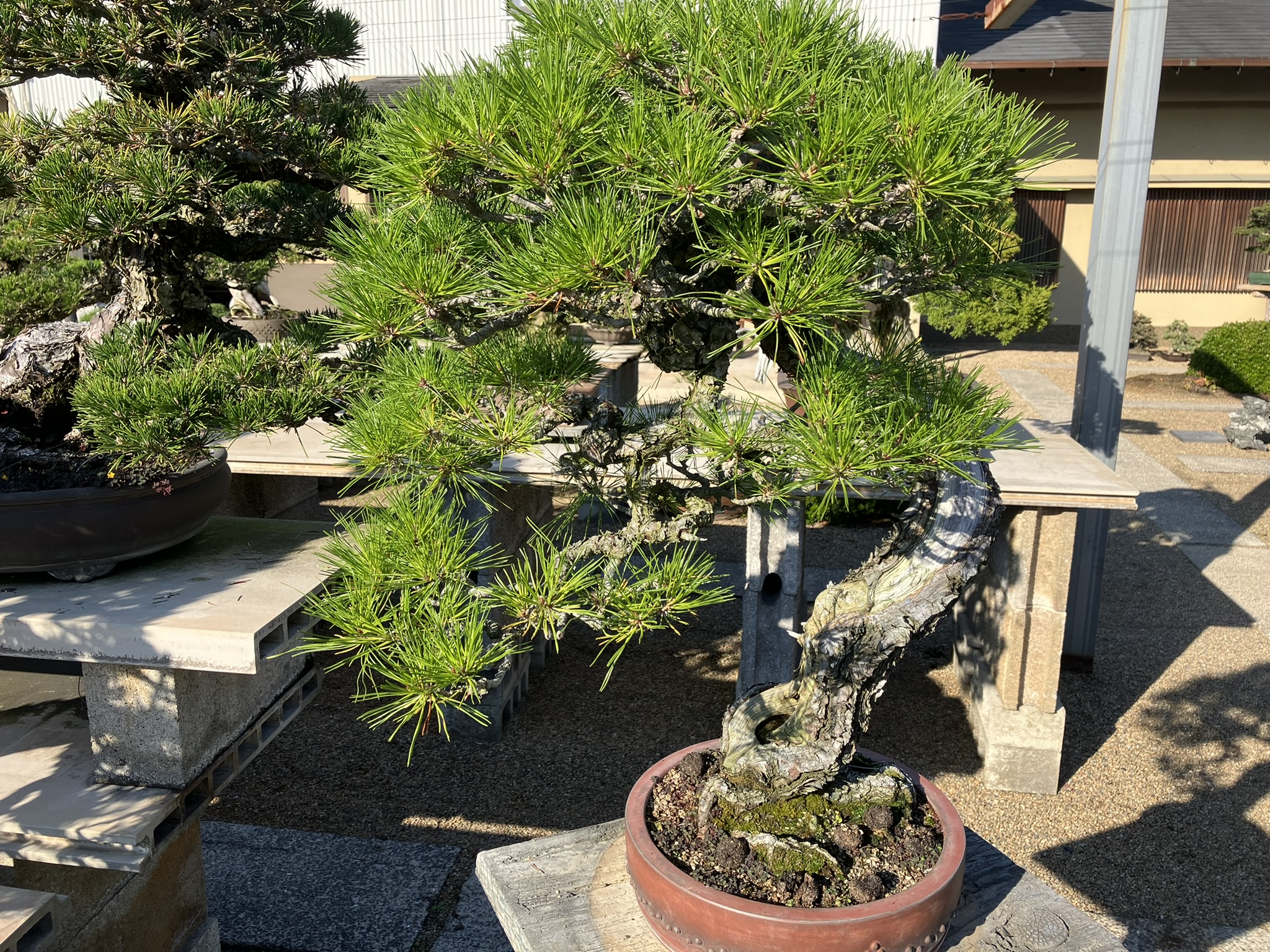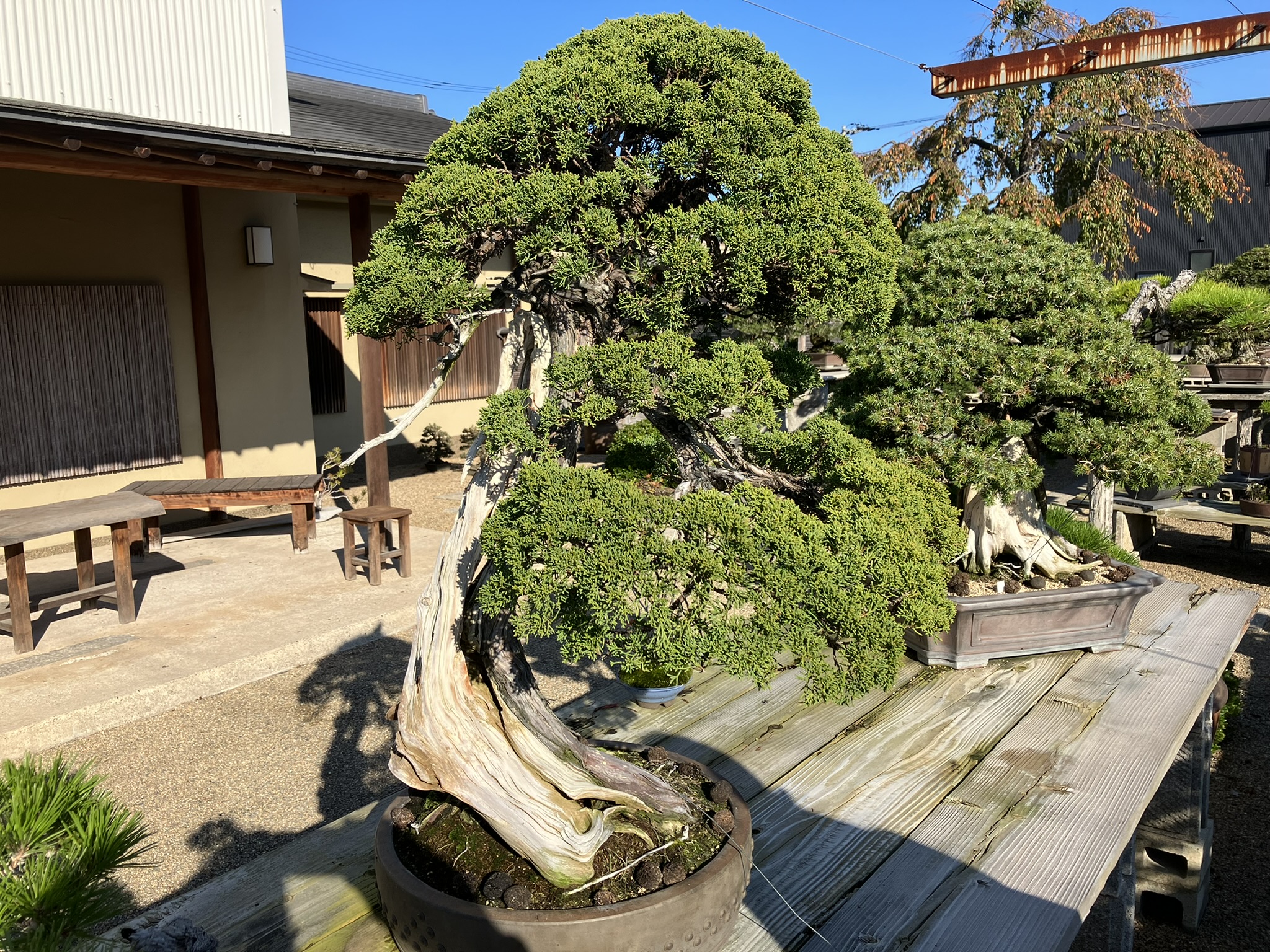Kinashi & Kokubunji Districts
We visited the pine and Bonsai producers in the districts of Kinashi and
Kokobunji over the two afternoons while we were in Takamatsu, with there being
approximately 60 pines & Bonsai farms or producers within the two
districts! We have been growing Japanese
pines from seed since 2018, of which we later set up and run Wakai Tree Ltd,
wakai meaning young in Japanese, so Young Trees. For more information about our
business please visit our website, www.wakaitrees.co.uk. So,
we were keen to visit this area for this reason.
To get there it’s only a short train journey on the Yosan line of around
8 minutes on the local train from Takamatsu station, both the districts can be
reach from the one train line and are relatively close to each other. Taking
advantage of our JR passes we could just get-on and off any train on this line
as they run frequently. It was obvious this was a pine farming area, as we
looked out of the train window there were so many areas and fields with Niwaki
tree and Bonsai trees growing happily everywhere!
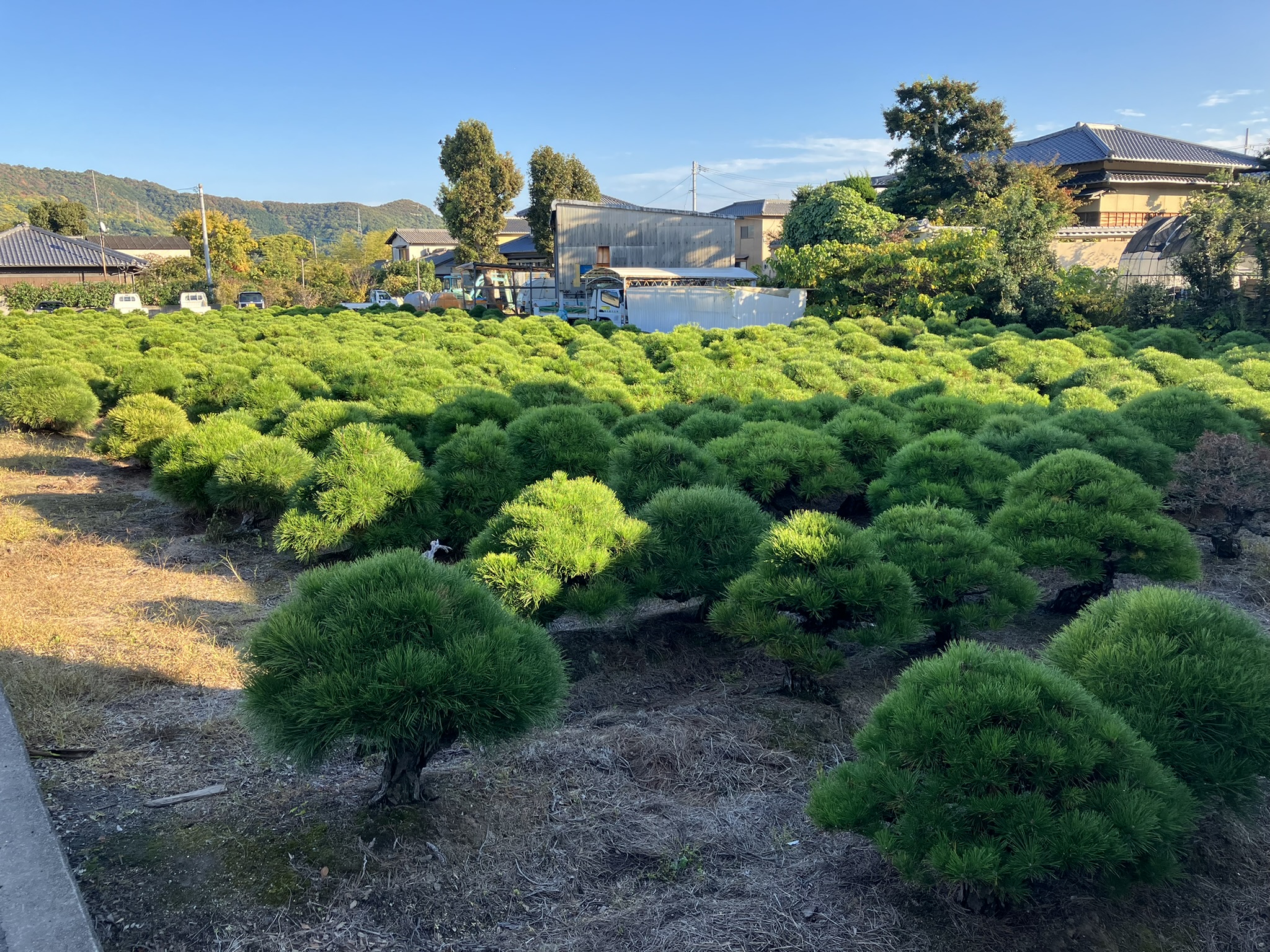
Anyways, we decided to enter slowing walk in and a lady came out to greet
us…so we put into practice out Japanese, and managed to say out greetings,
where we were from and ask if it was ok to look around, etc. Having been
learning Japanese (well trying!) for many years now it was the perfect time to
put it into practice. We had anticipated this scenario, so had brushed up on
Japanese words and sentences around information and questions about us growing
pines and them growing pines, etc. However, it turned out the lady could speak
a small amount of English, so between us we managed to have a relatively good
conversation regarding pines and Bonsai. She was keen to speak English just as
much as we were keen to speak Japanese! Which often happens we find! We were
trying to practice some Japanese whoever we were speaking replies in English,
making the conversation quite strange!
She said to us, we were the first English speaking people she had spoken
to and visited their farm in three years, due to covid. I asked her if she
worked here, she said yes and her husband owns the business and he was the
fifth generation being handed down, amazing!
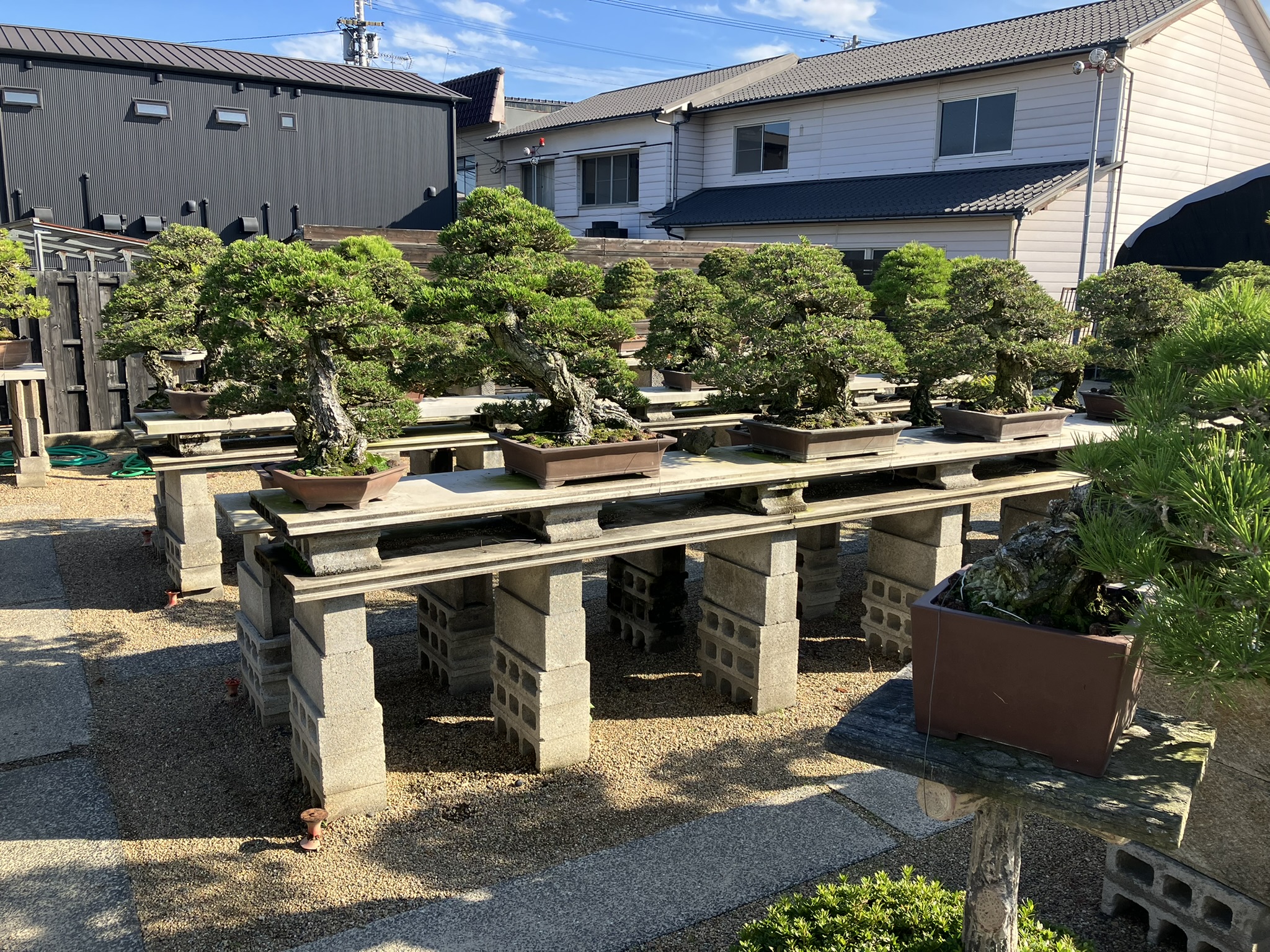

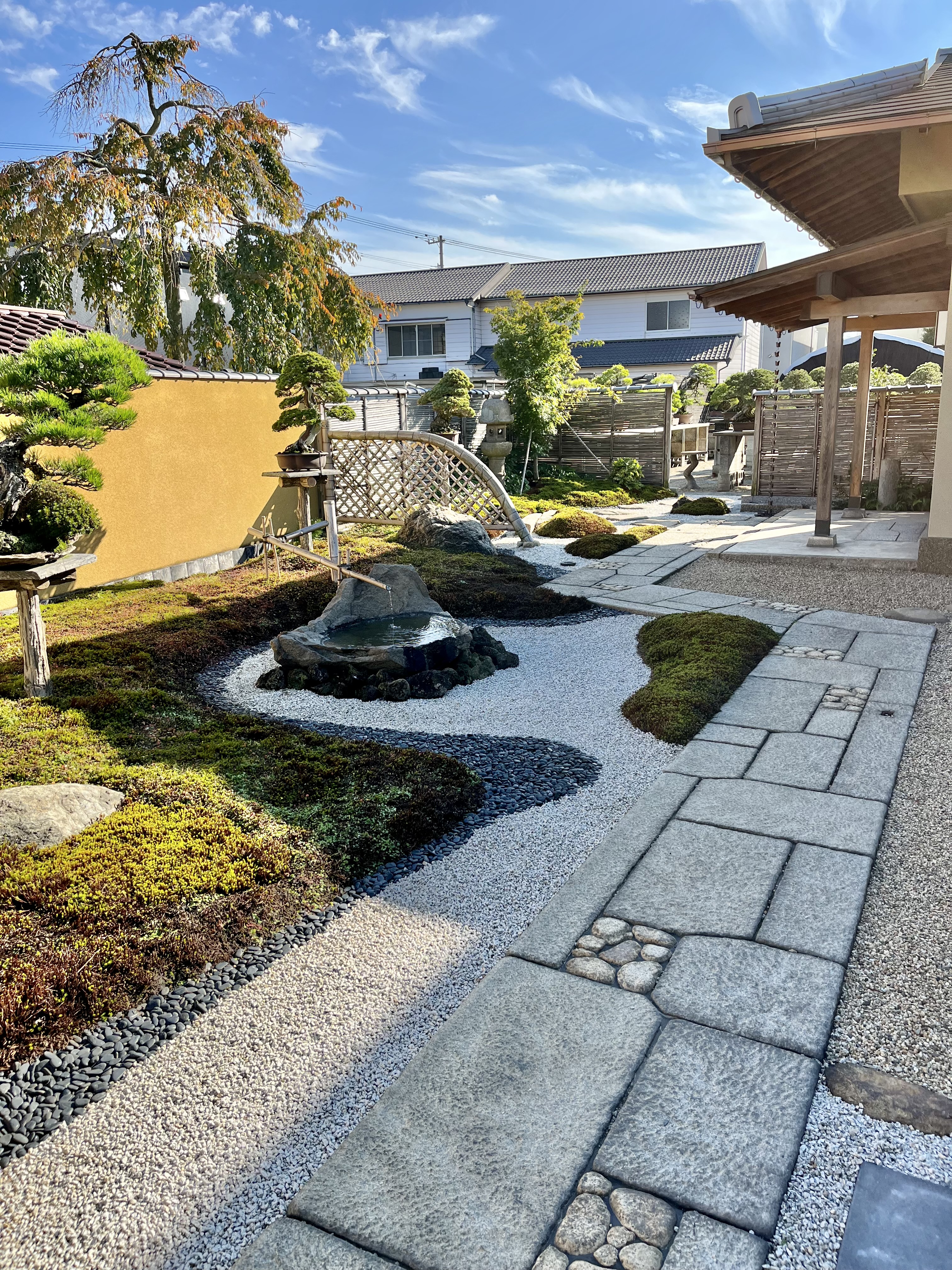
We continued to walk around the many farms and producers, walking into their premises and asking permission to look around and take photos, everyone was so polite and friendly. One of our final farms we looked around was one of the most impressive, several of the other producers had pointed us this way to Kandaka Shojuen Bonsai producer. At the entrance to the farm was a huge Bonsai pine named Dohyo-iri and it acted as a guidepost to the farm/garden.
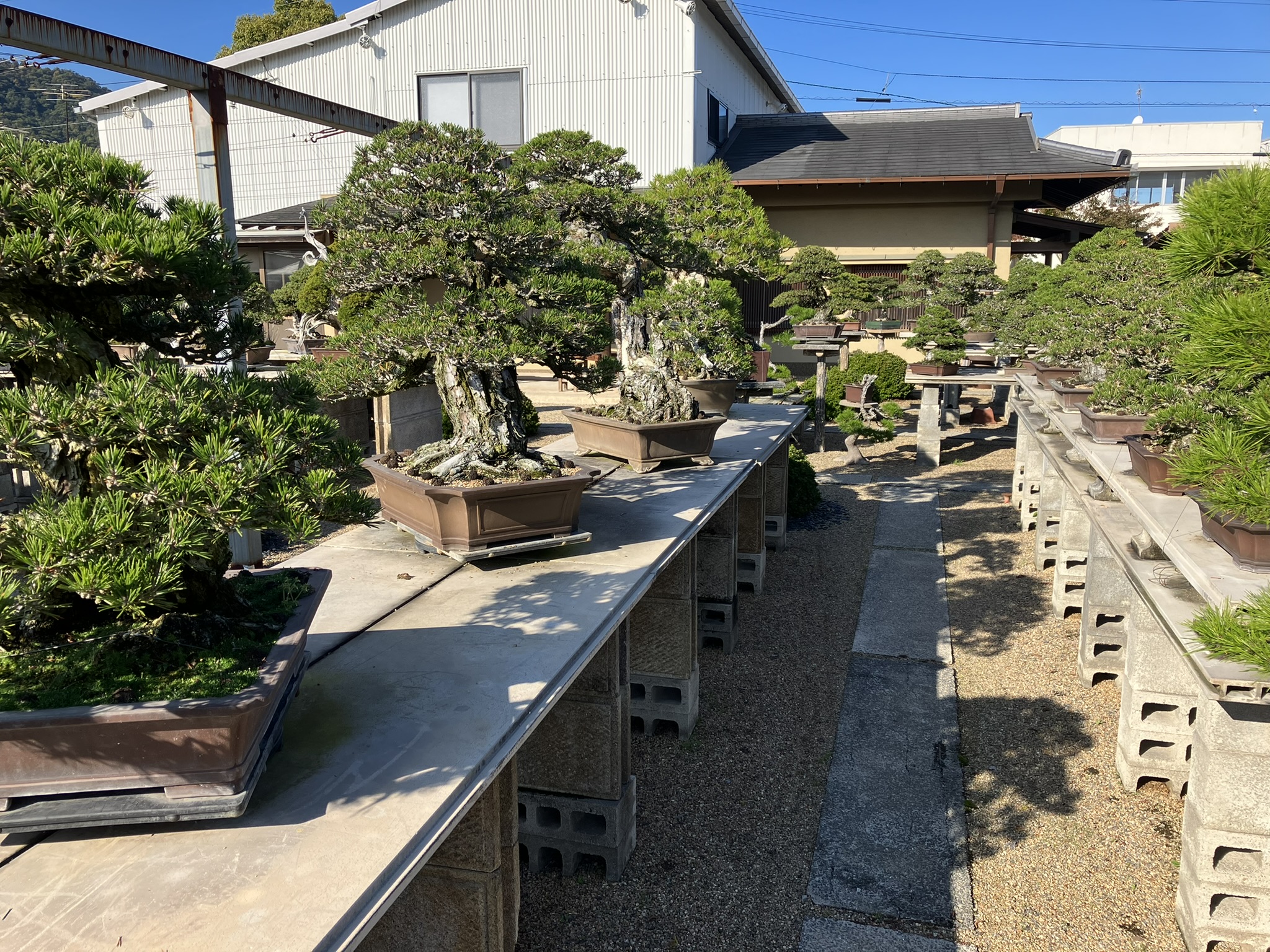
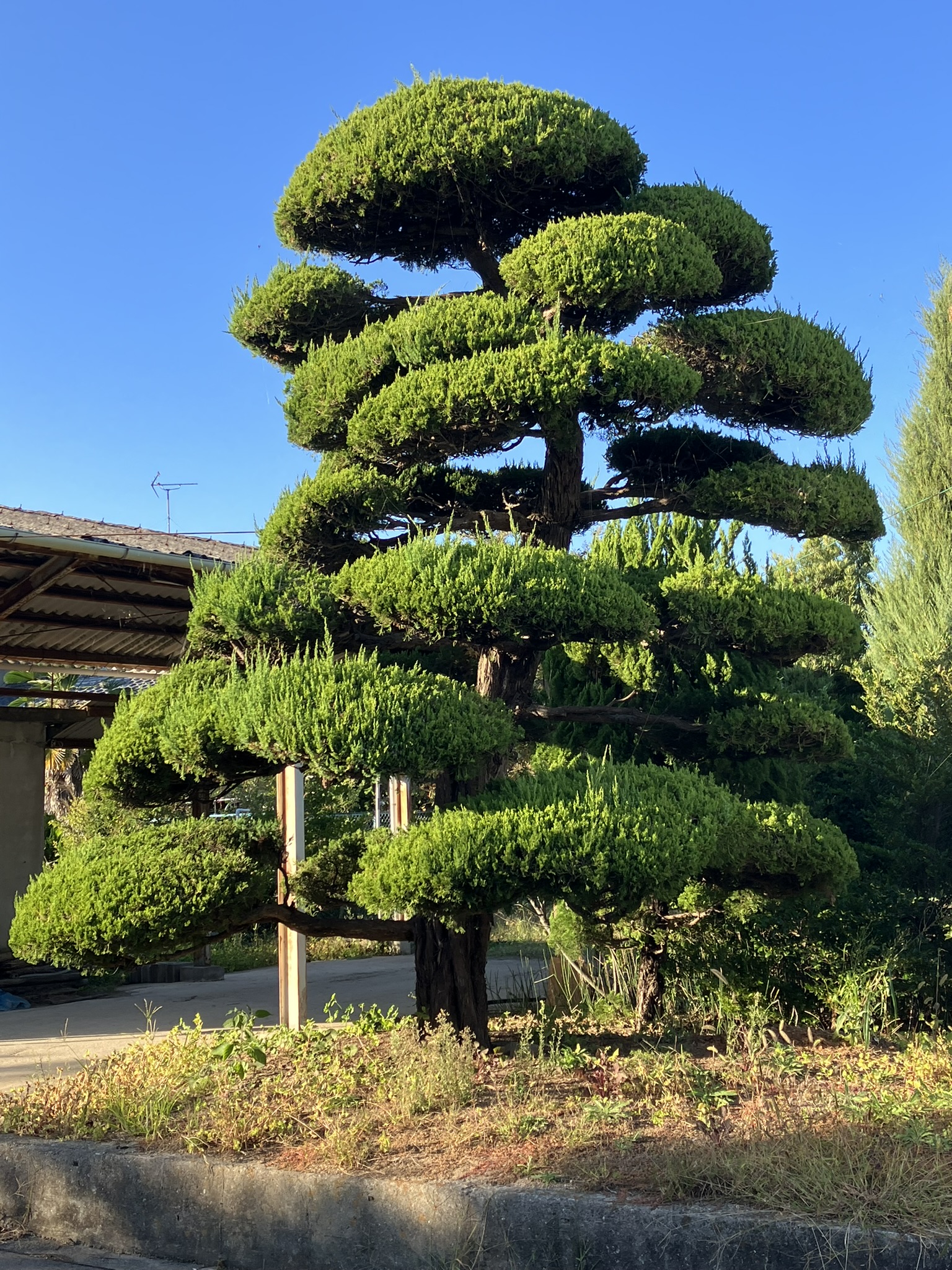

It’s said the history of Takamatsu Bonsai dates back to the Bunka era
(1804-1818), during the Edo Period (1603-1868) it was thought it begun with
people transplanting trees that were naturally growing nearby into pots and
then selling them.
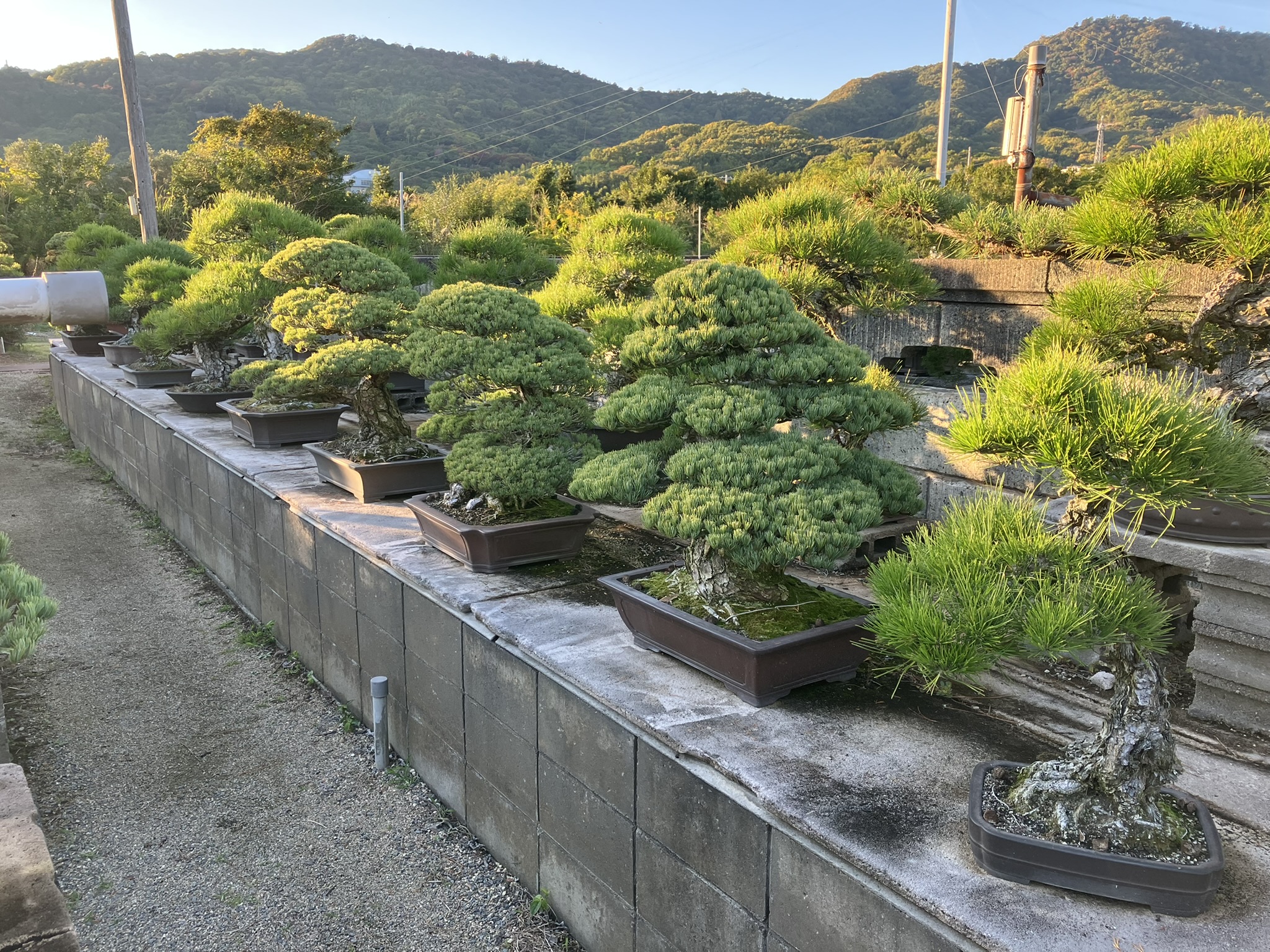
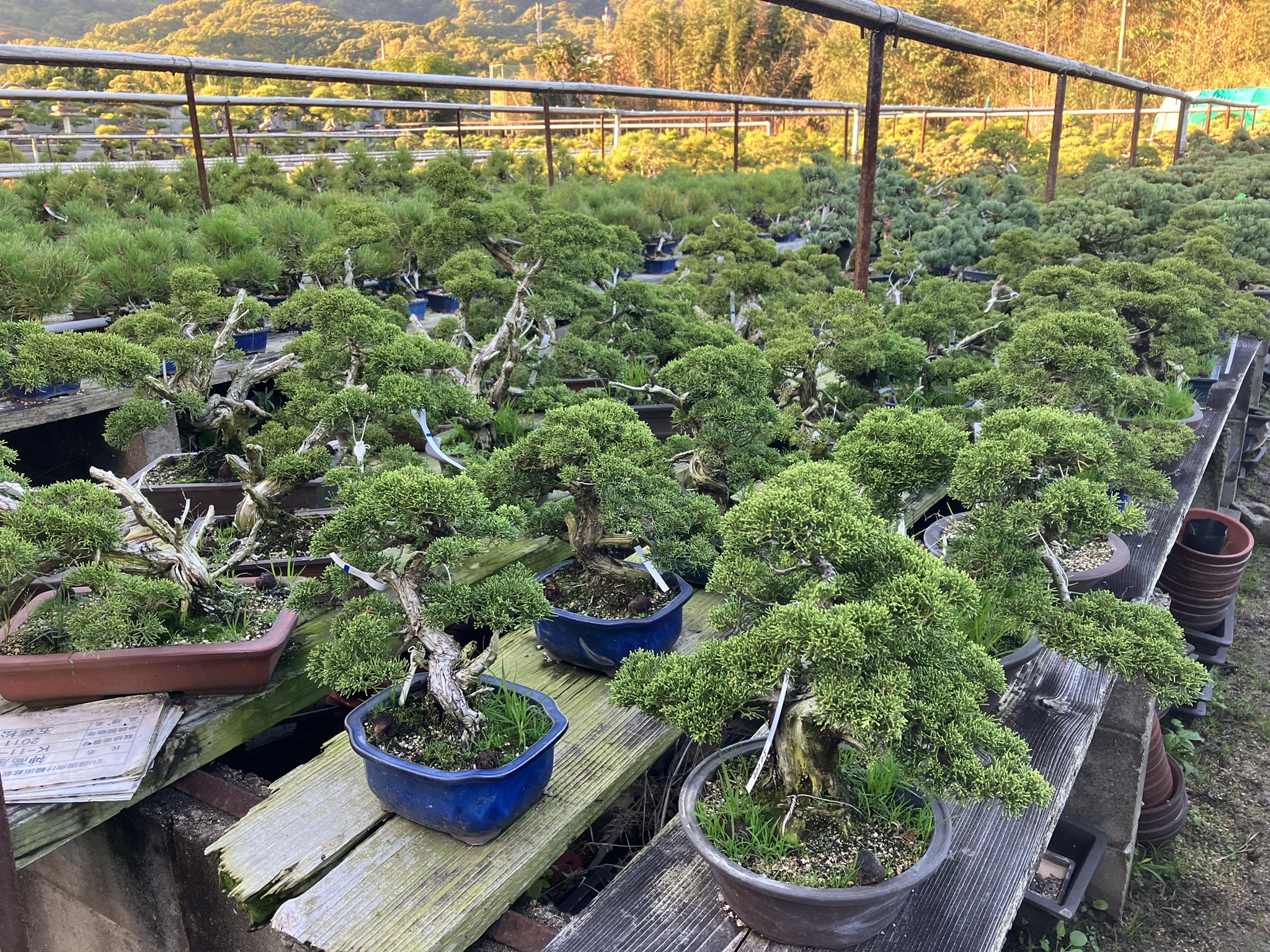
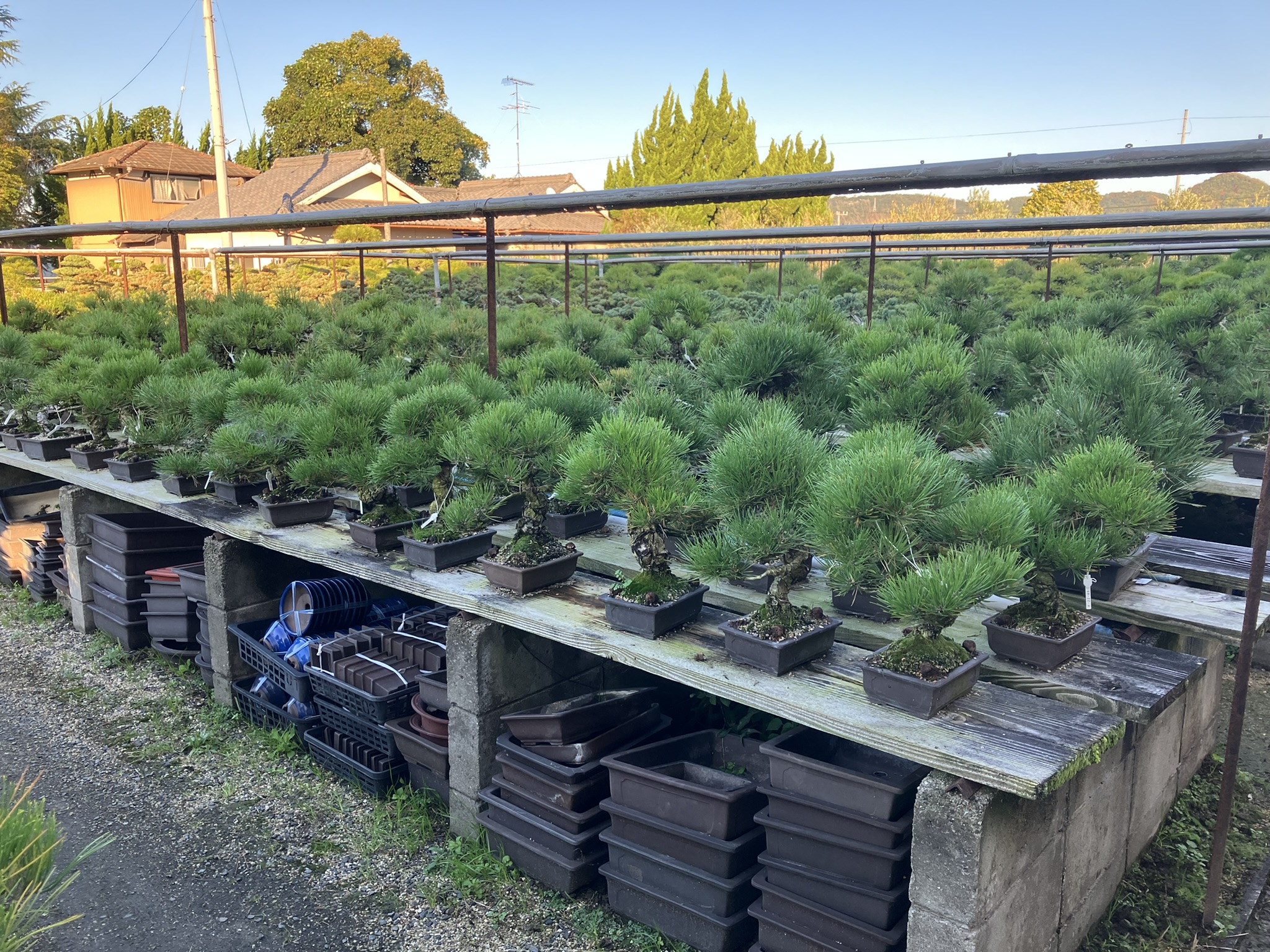
Today, Takamatsu Bonsai are globally renowned, and buyers visit from
Europe, Asia and around the world.

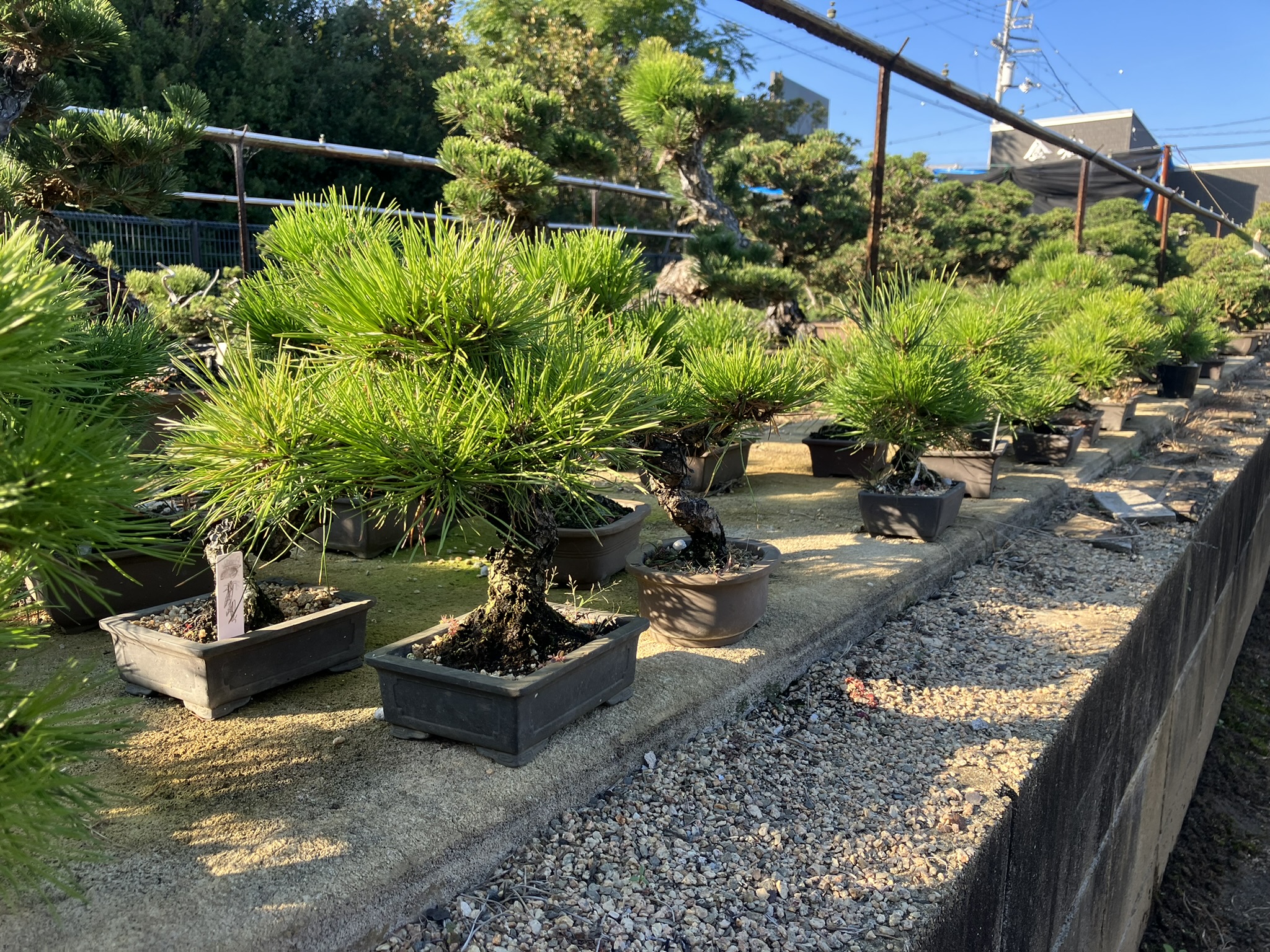
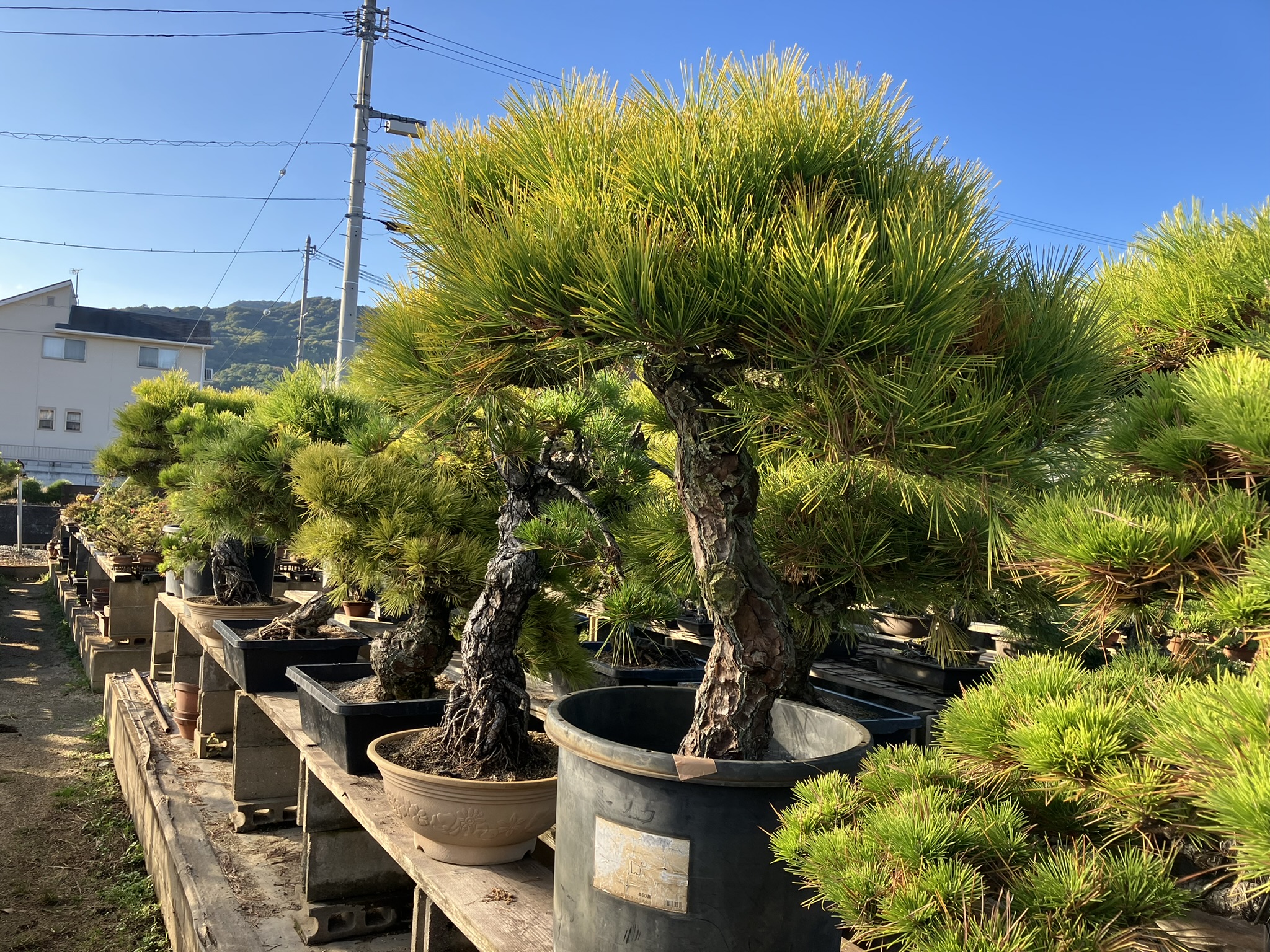


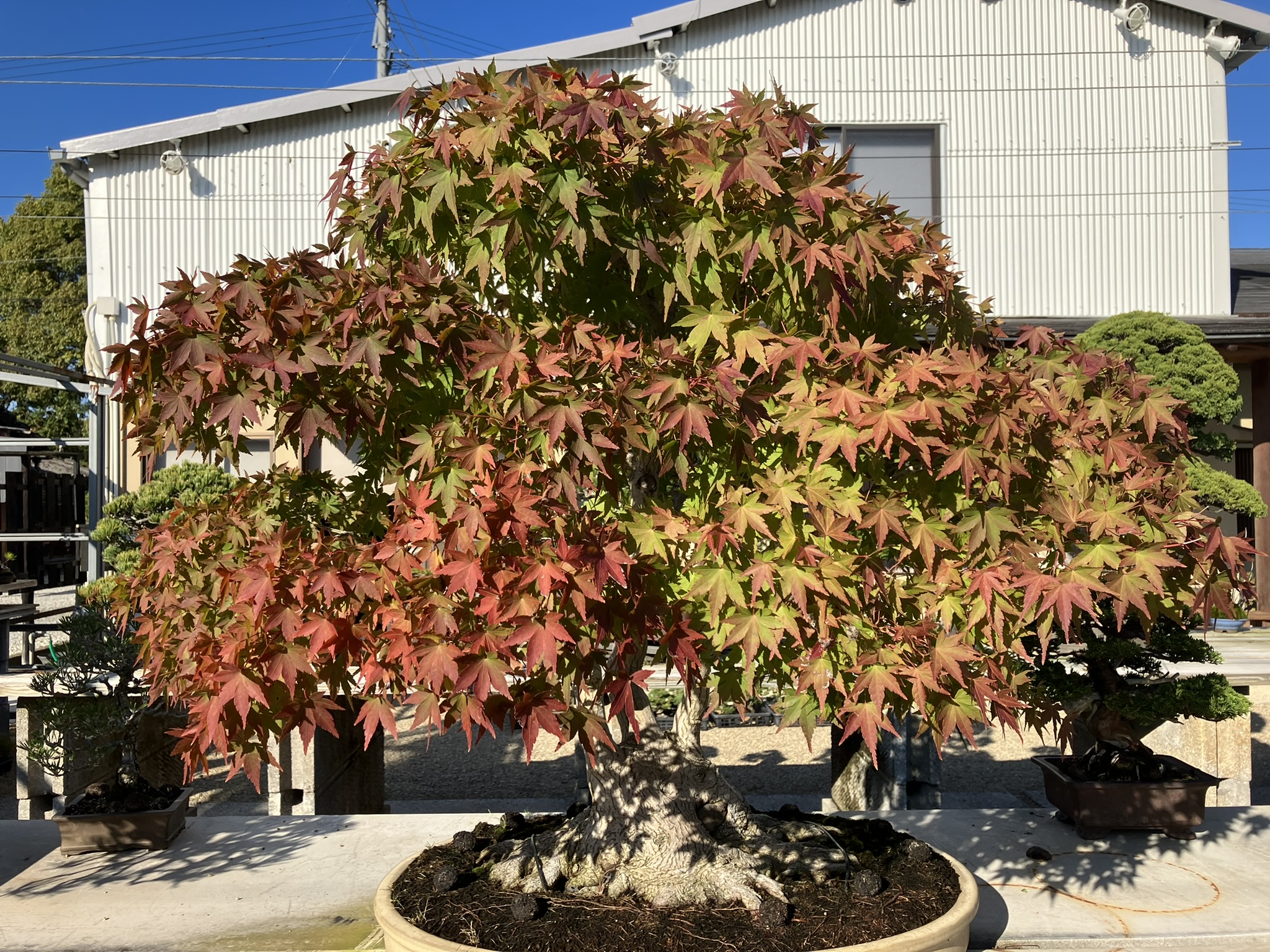
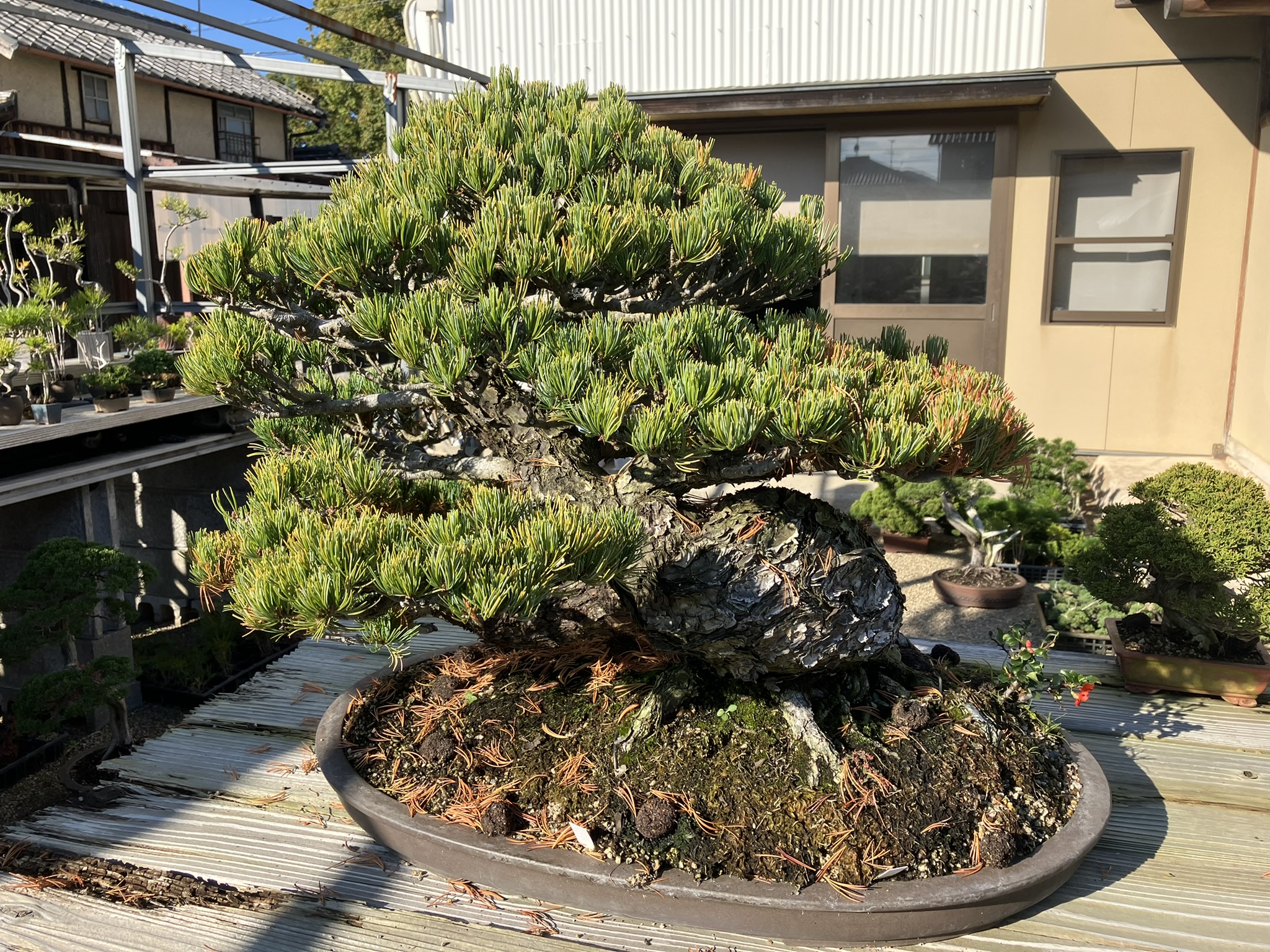

On leaving the small train station there was a large sign board with a
map of the Pine and Bonsai farm locations which was a great help, so a quick
photo of the map and we were off! Walking along the streets there were loads of fields full of
Bonsai trees in rows, which was amazing to see. It was only about 5 minutes
before we came across the first Bonsai pine producer, as we could see
absolutely ‘thousands’ of trees on display on benches in various sizes, which
was Nakanishi Chishoen Bonsai producer. There wasn’t anyone around, so we were
a little apprehensive regarding just walking in. Also, with this not being a
main tourist area not too many people seemed to speak English.
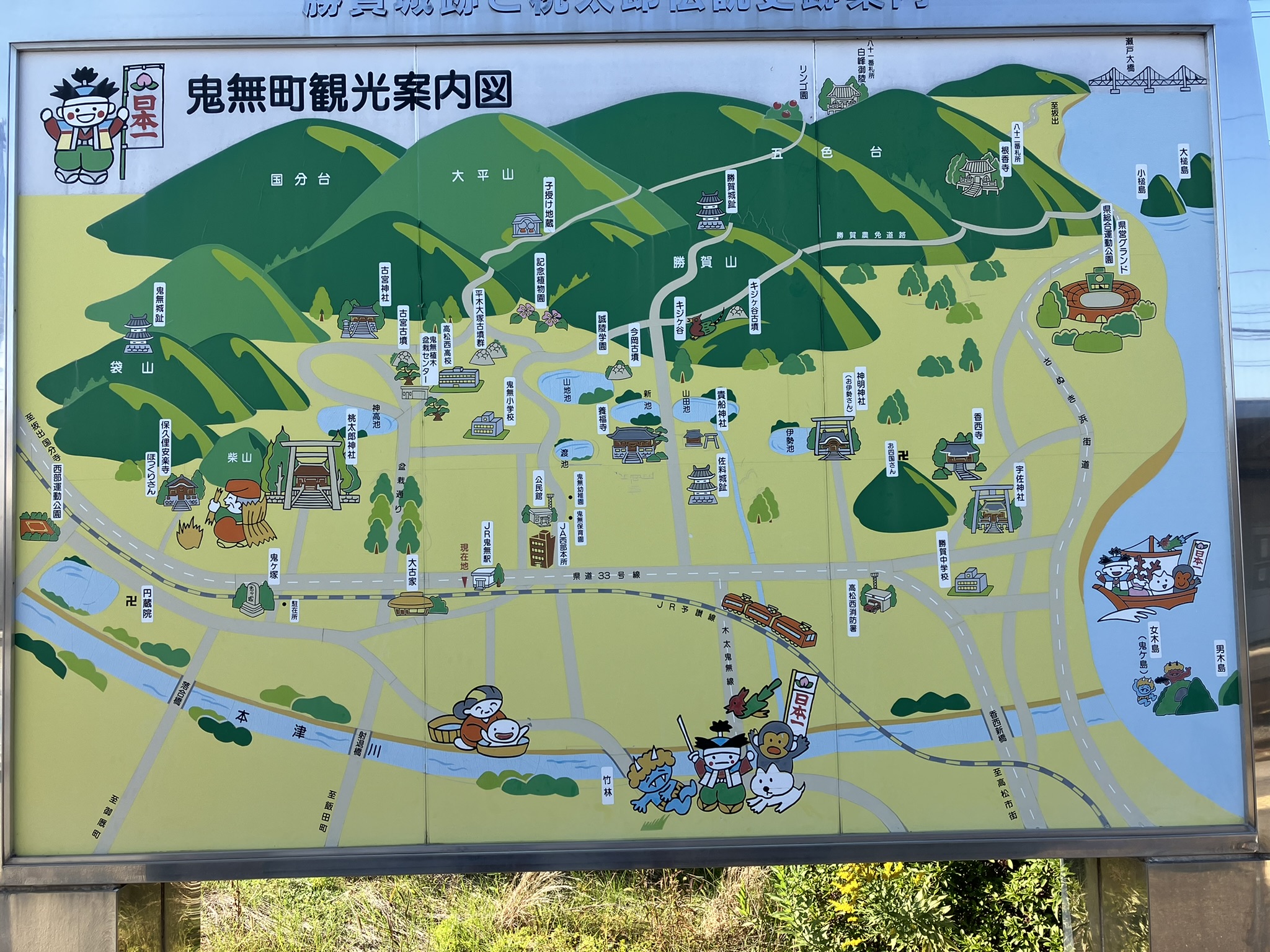
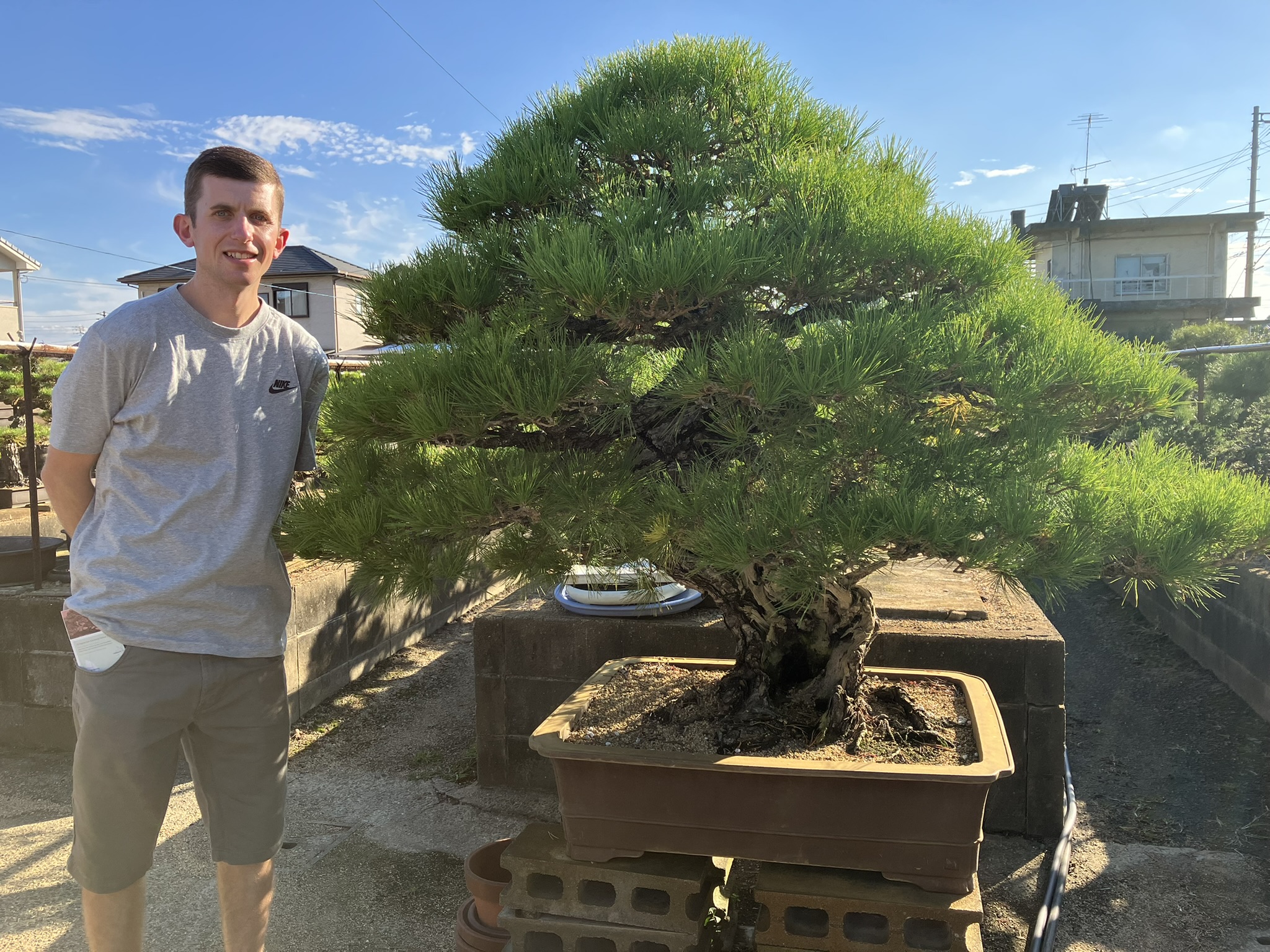
As we walked around, we asked her how old the trees were pointing to
particular trees of which she replied 300 years, 200 years, etc... Wow! We asked her the age
of the trees around the size we have grown ours too, we were pleasantly
surprised on her answers, as it meant we were fairly on par…so it was
reassuring our growing techniques are working! We both enjoyed our small
conversations we manged to discuss in the two languages, and hopefully we will return
to this farm to continue our conversations!
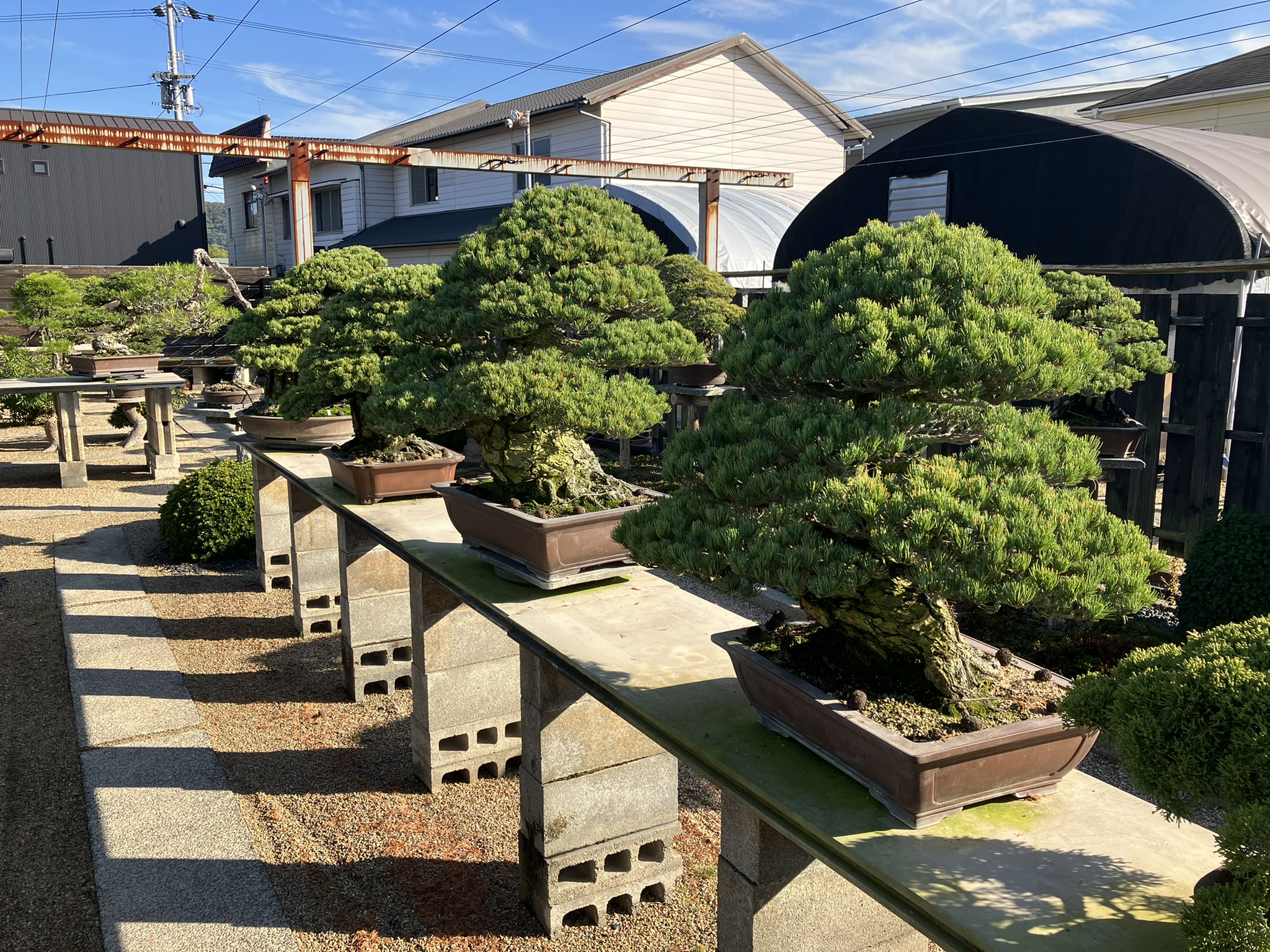


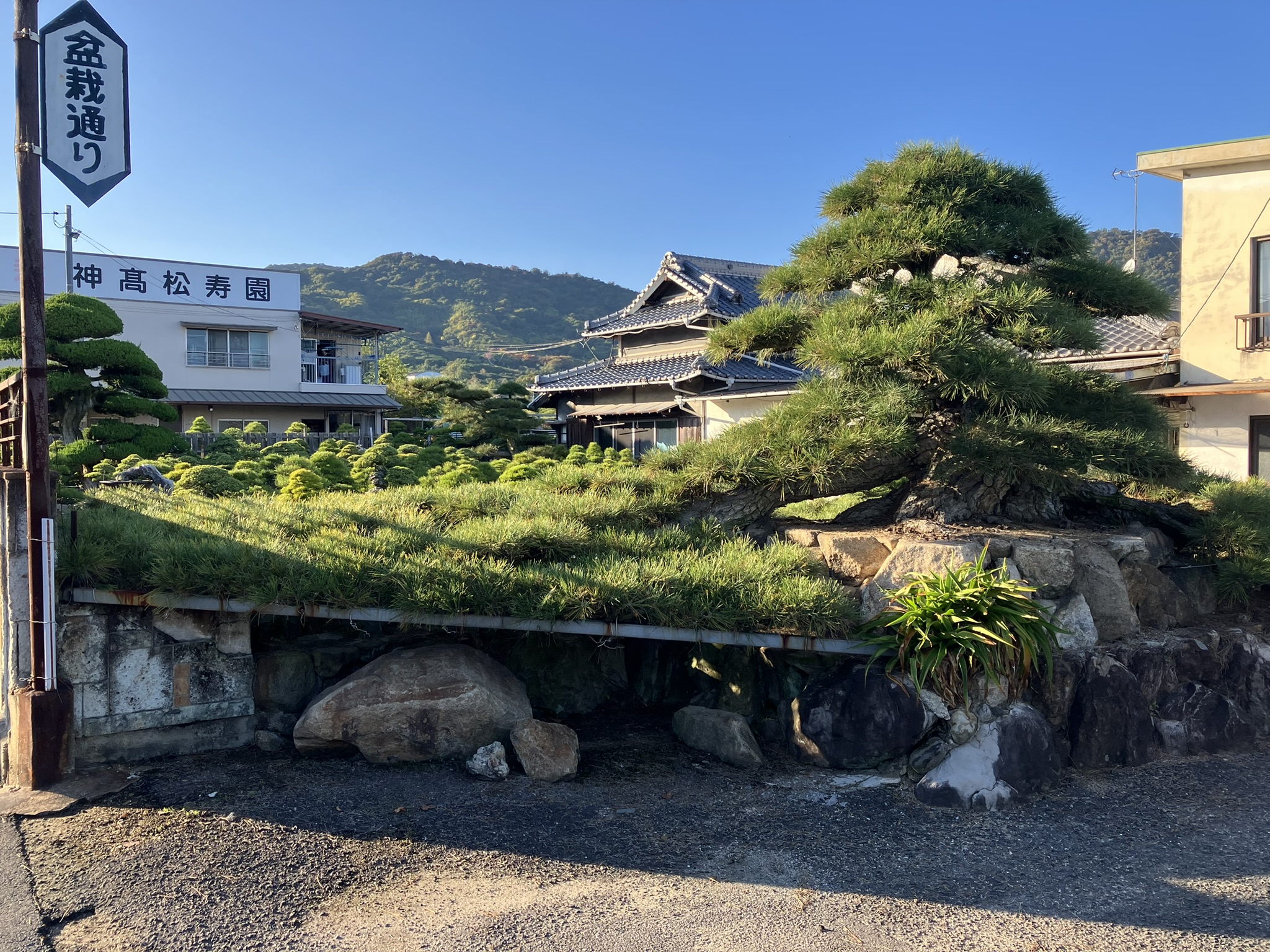
The owner, which we later found out was called Kandaka Keiji san is the
fourth generation producer of the farm! He like all the others was really
friendly and was happy for us to just wonder around. There were loads of long
benches and walking around we were both in awe of the fabulous trees on display
from all sizes, including lots of developing trees, which is where our interest
is. There were certainly some very stunning trees proudly on display! Our
pictures will hopefully speak for themselves and do the rest of the talking!
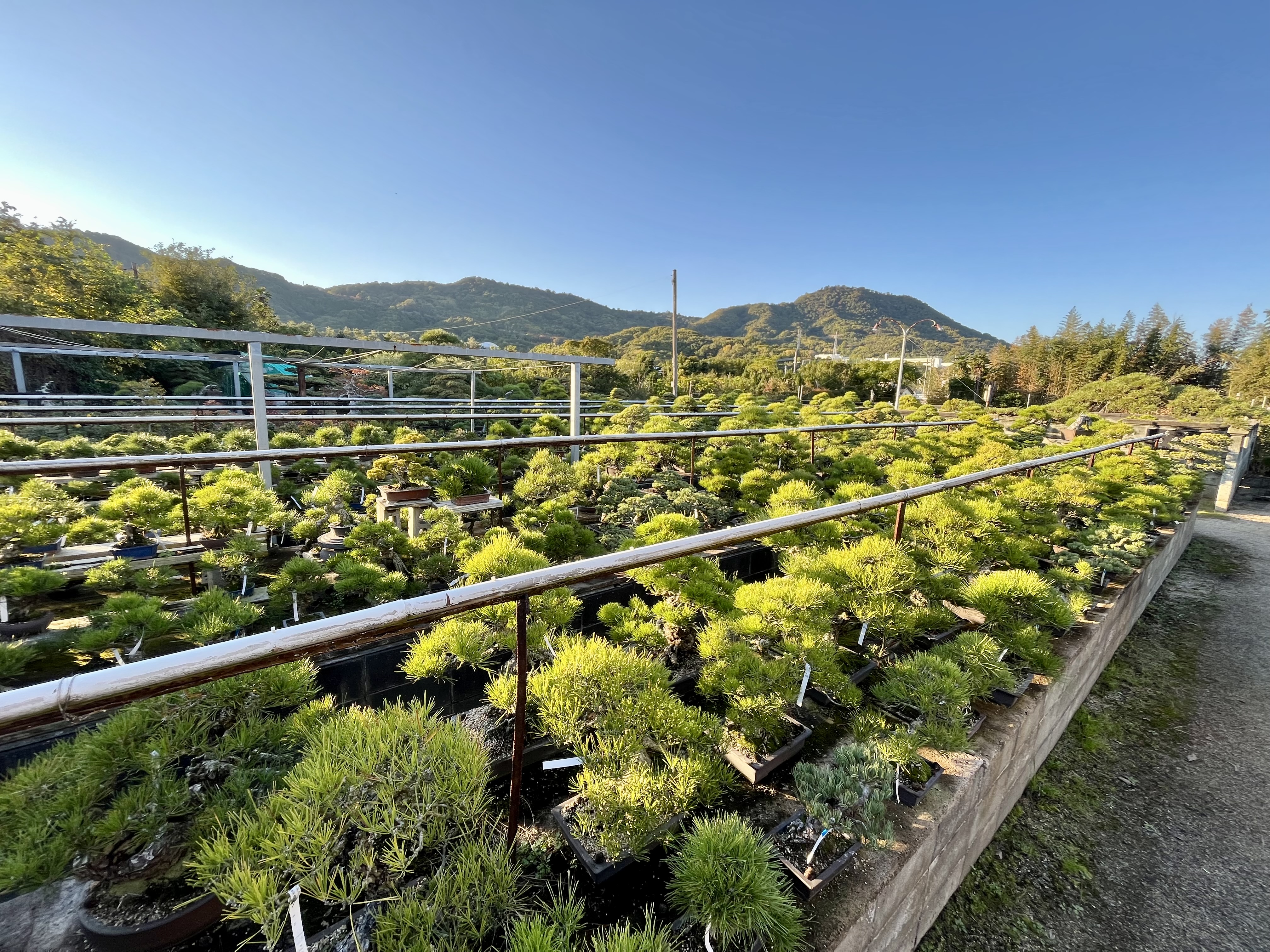
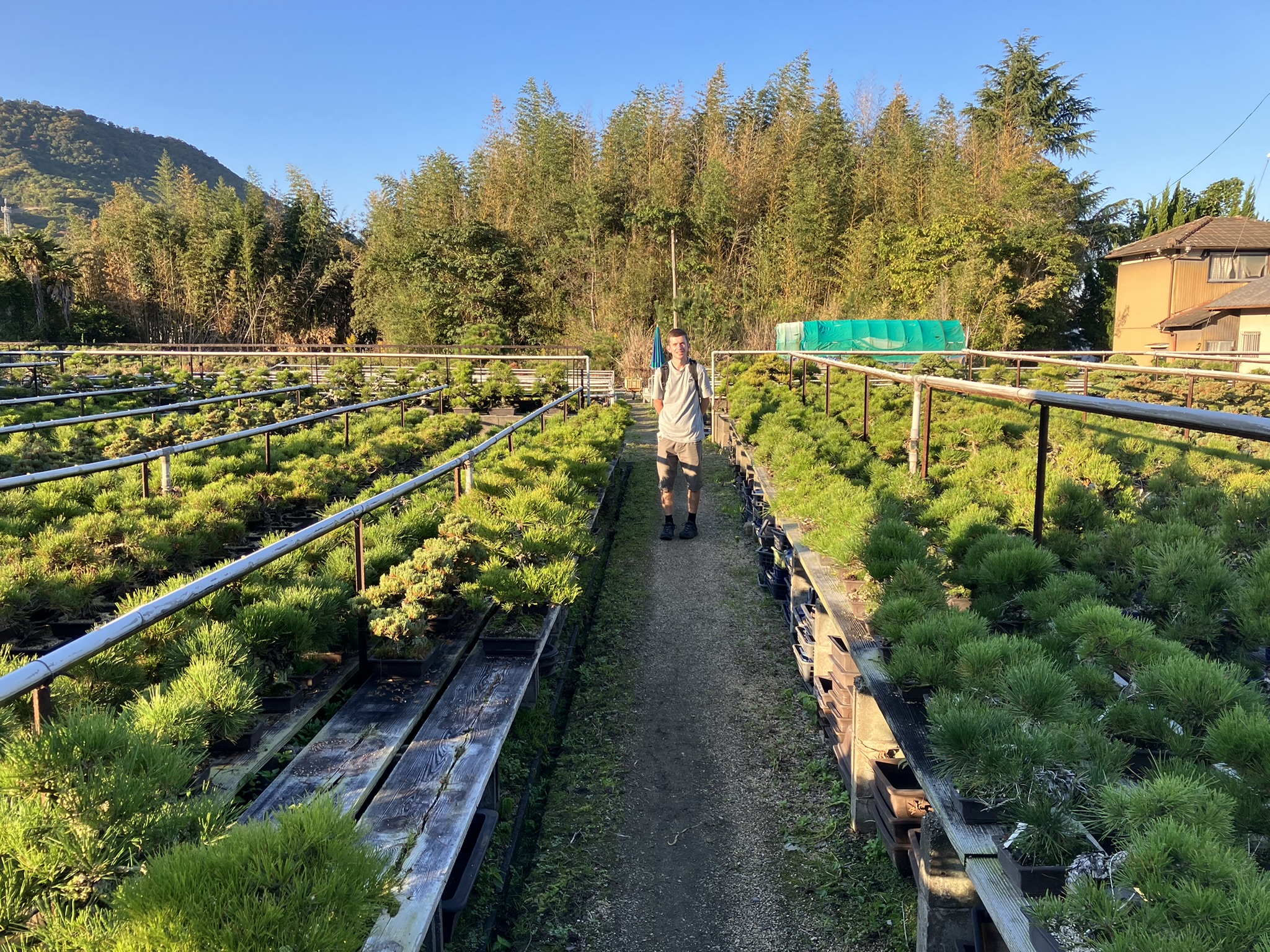
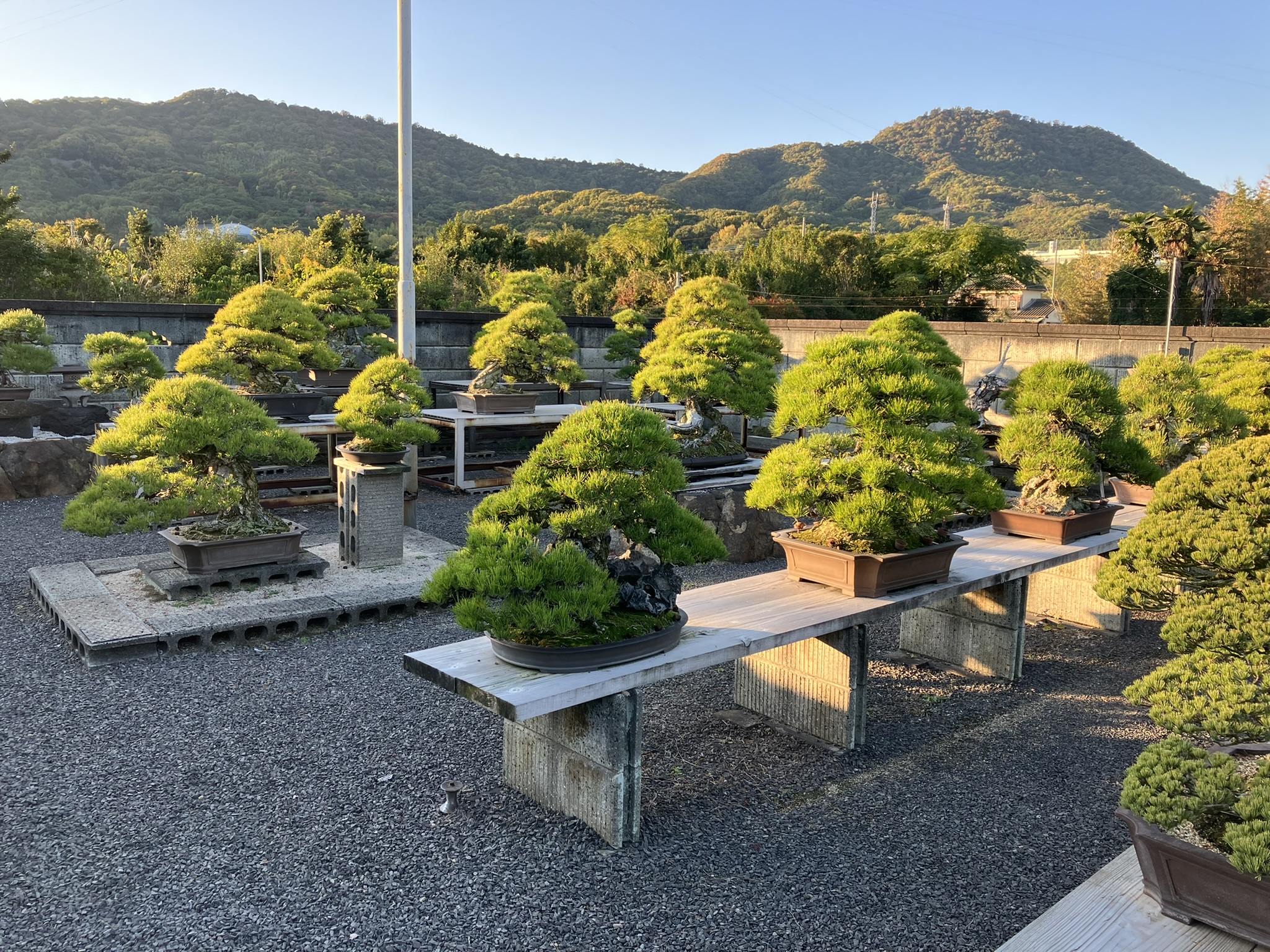
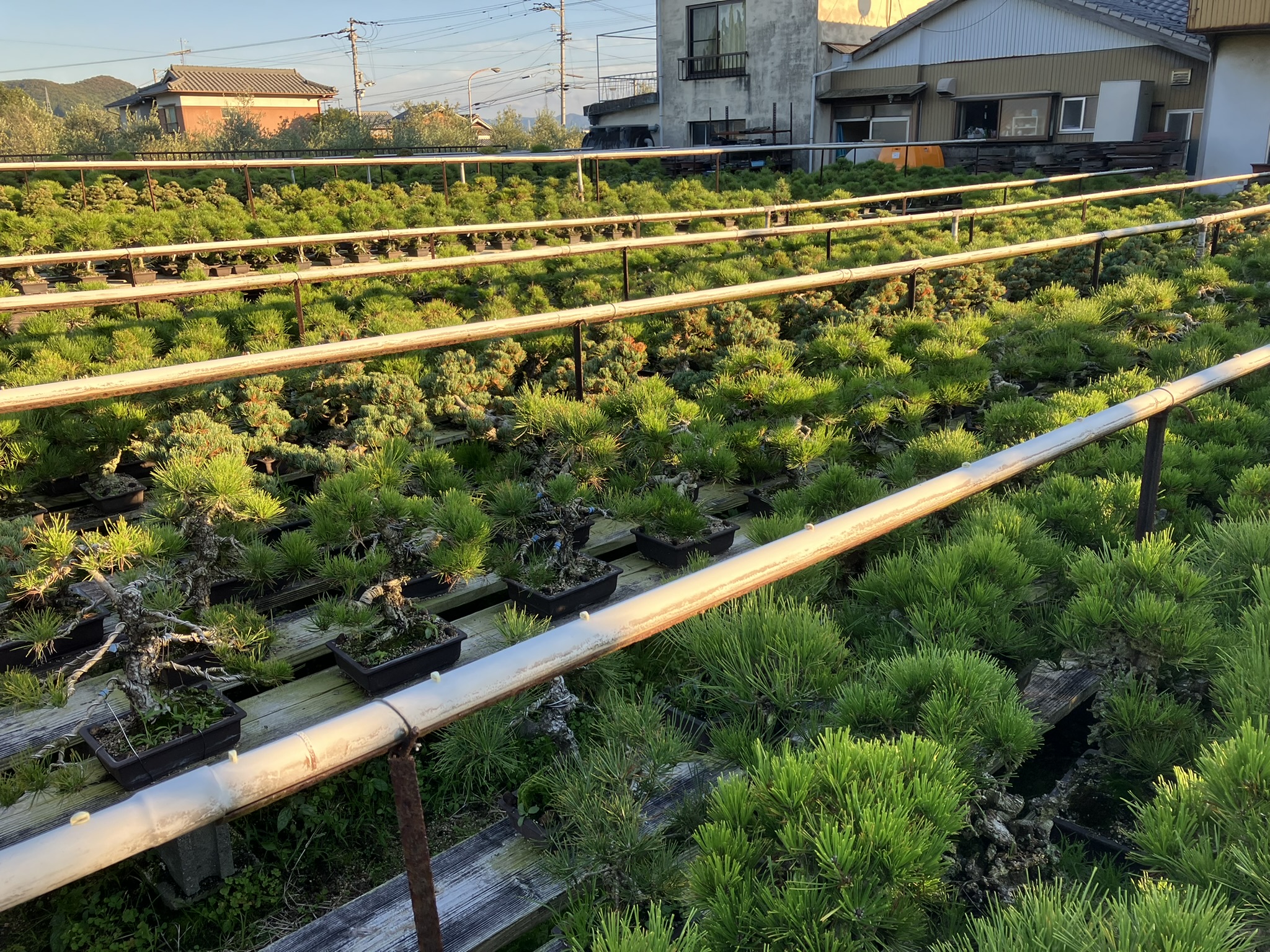
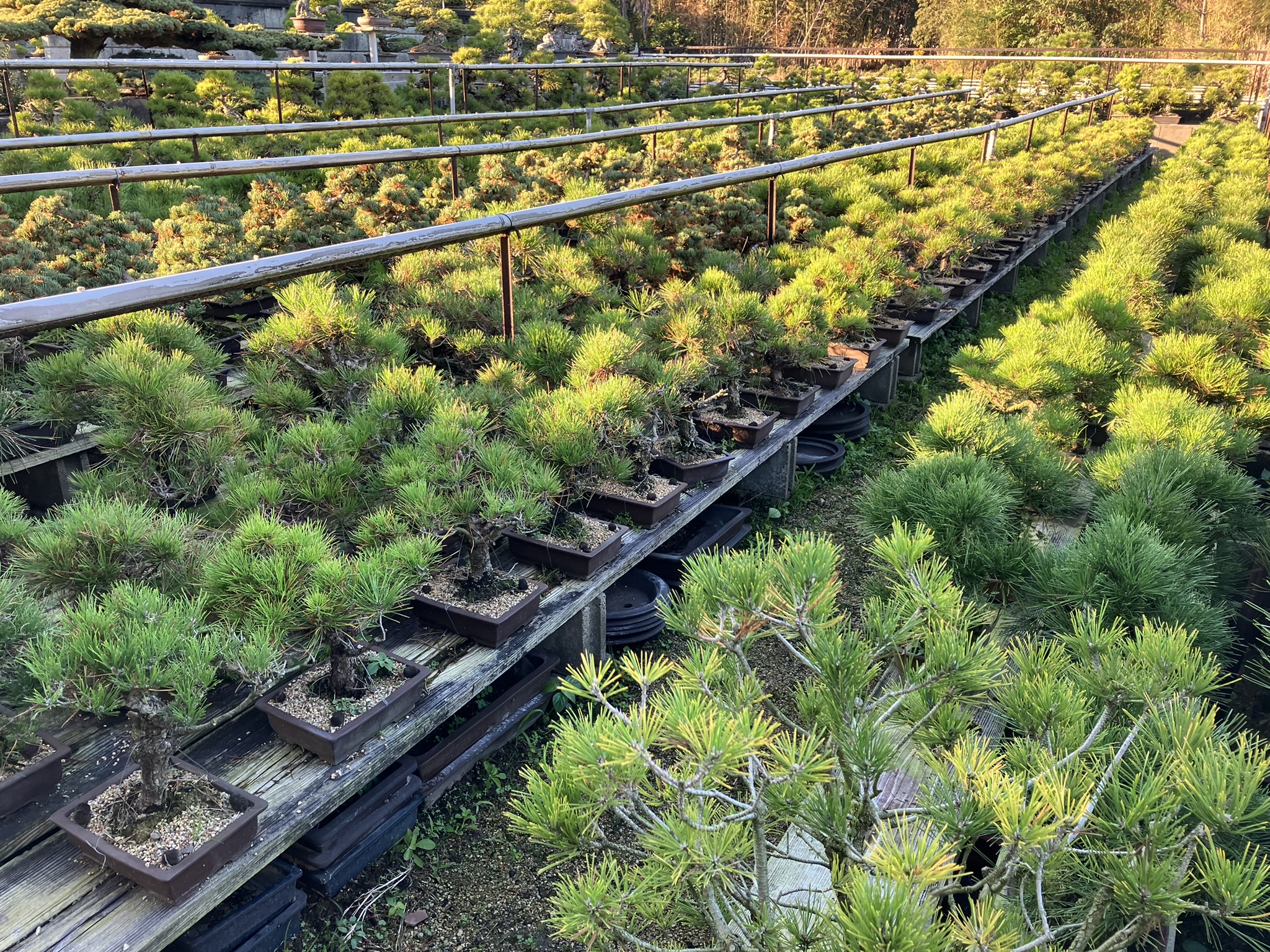
Takamatsu is perfectly situated for growing pine trees with the right
climate all year around. Grafting and pruning techniques derived from the
cultivation of fruit trees were incorporated, and so Takamatsu grew into
Japan’s top Bonsai production areas….a bit like Niigata is for Nishikigoi!
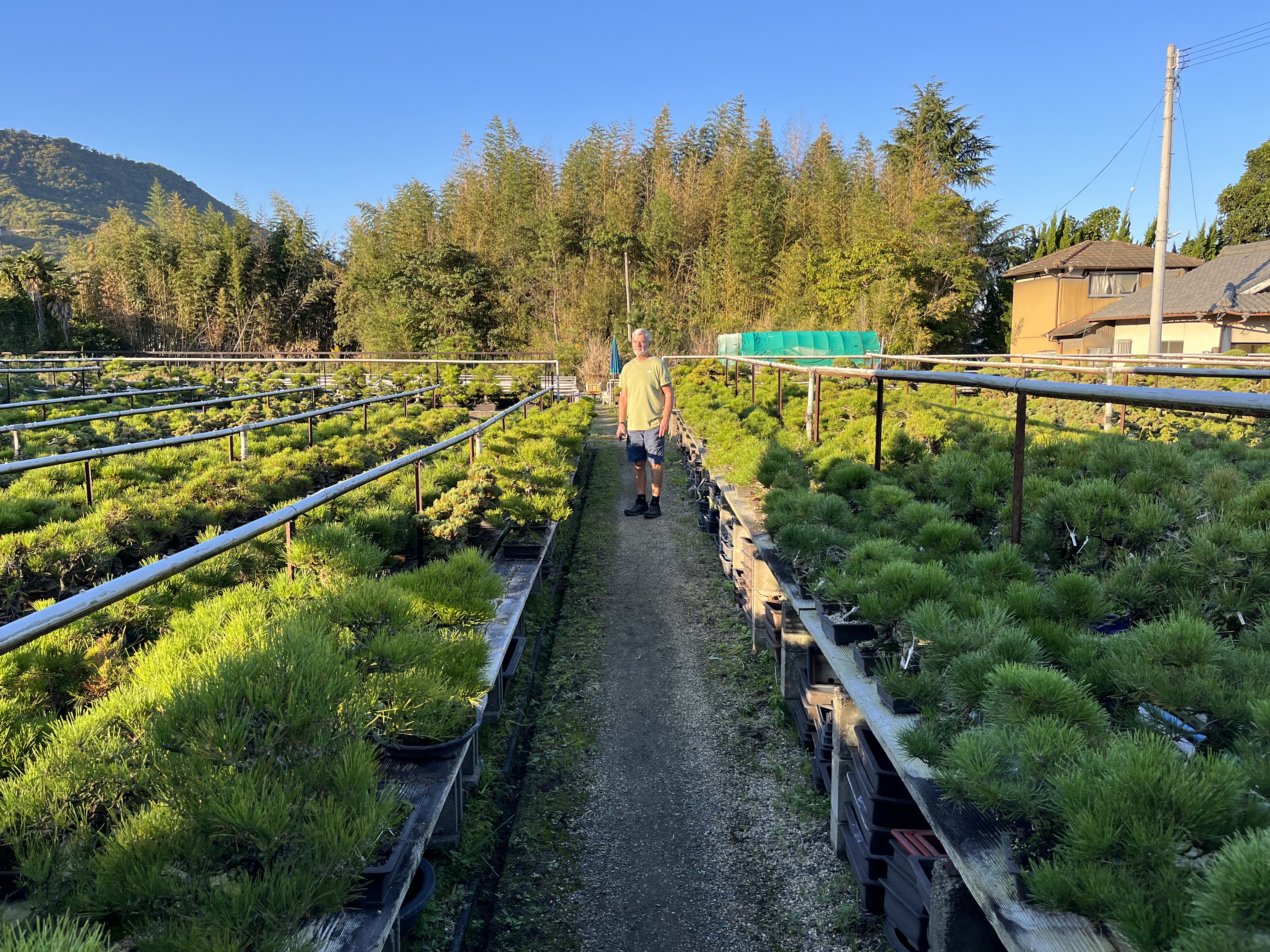
After a super day, we retraced our steps back to Takamatsu station, a
quick freshen up and back out to look for somewhere to have a nice meal…of
which we found, and it was very nice! Like most of this trip, but especially
here in Takamatsu we didn’t see any westerners…so when we walked into the
restaurant the lady on the counter seemed surprised but also happy to see us!
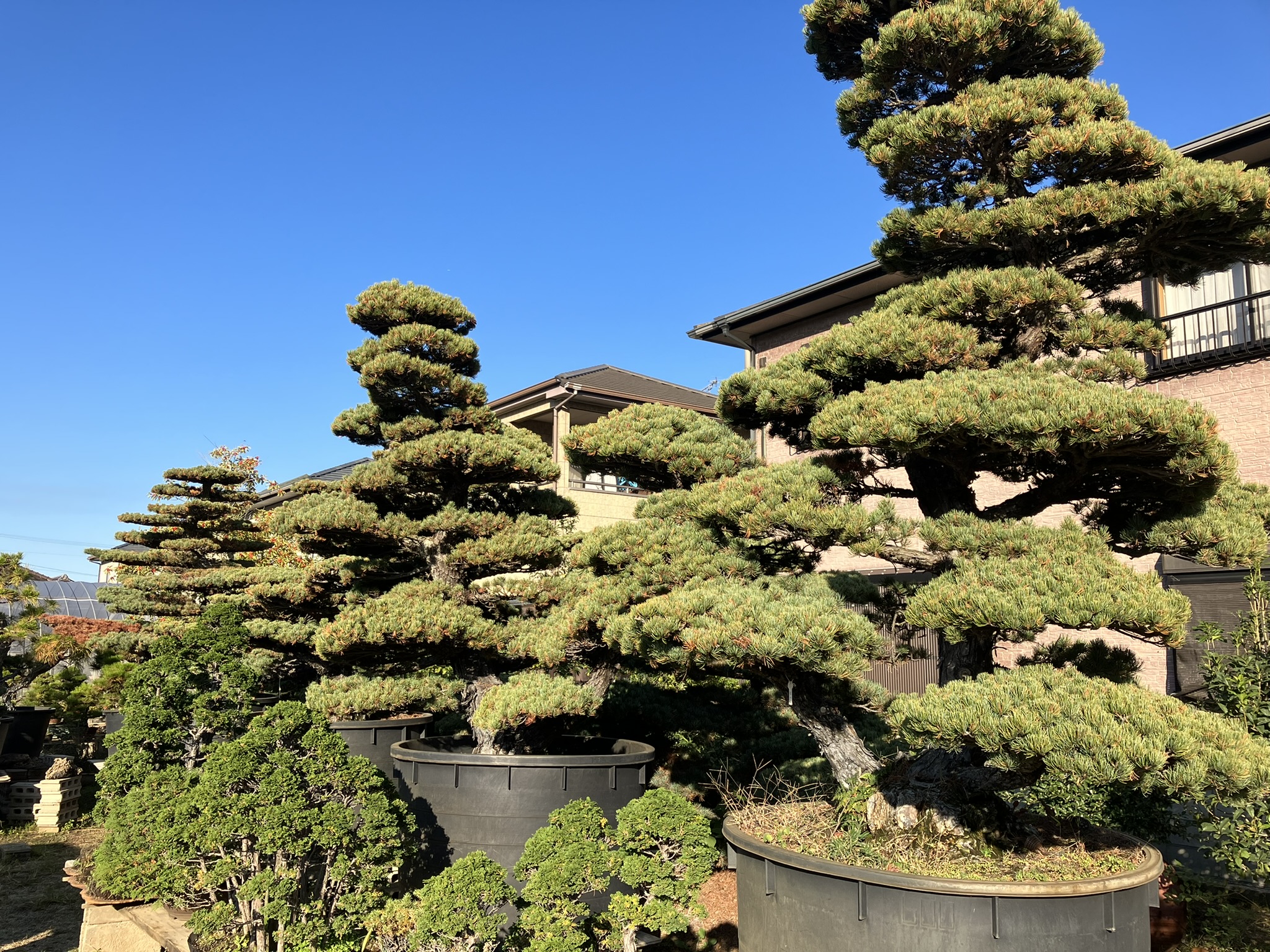
This particular day including Ritsurin Koen, we had walked a total of
just over 12.5 miles!
